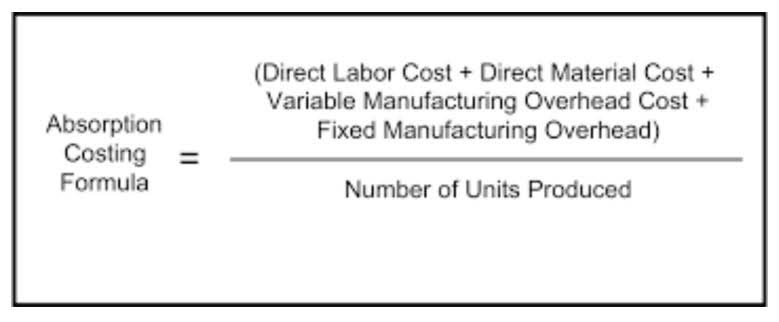
To successfully implement JIT, start by analyzing your current inventory processes and identifying areas for improvement. Establish strong communication channels with suppliers and invest in technology that provides real-time data on inventory levels and demand forecasts. The second stage in the inventory management process is manufacturing or production. For instance, a firm that deals in finished goods does not hold any physical inventory of its own, or sells wholesale products, and will not require any manufacturing or production. Lean manufacturing is a broad set of management practices that can be applied to any business practice. It is a production process based on the ideology of minimizing waste within a manufacturing unit while maximizing productivity at the same time.
Lean Manufacturing System
An effective inventory management process can prevent these issues and offer the following benefits. The inventory management process is the portion of supply chain management that handles payroll the recording, tracking, ordering and selling of products. Each business’s inventory management process differs, but most include the receiving, stocking, selling, fulfilling and reordering of goods. Reorder points represent the inventory levels at which new orders should be placed. Reorder points are specific to individual inventory items and are based on that item’s average daily usage, order lead time and the amount of safety stock you have on hand.

FIFO (First In, First Out)
Perpetual inventory management is an accounting system with advantages for e-commerce businesses of all sizes. This inventory tracking method monitors and updates stocks continuously as sales occur. A regular cycle count should be baked into your inventory management process to help you confirm the accuracy of tracking information listed in your inventory management system. This prevents the loss or theft of items, allowing the warehouse manager to quickly confirm that all inventory is where it should be at any given time. Whatever system you use, it should be able to track items right down to the specific aisle and bin they are placed in within your warehouse or storage facility. If a worker moves an item without updating your data – typically through an inventory management system – it will be difficult to locate the item when it comes time to send it out for delivery.
How to implement Perpetual Inventory Management?
Bulk shipping involves buying and transporting large quantities of products at once. This reduces per-unit transportation costs—and can often get you a discount from your supplier—because the total shipping cost is spread across a larger number of items. Minimum Order Quantity (MOQ) refers to the minimum number of units that you must order from your supplier at any one time.

- Inventory management is the process of overseeing and managing stock, from purchasing raw materials to selling finished products.
- With up-to-date data, businesses can quickly adjust to changes in inventory.
- Cycle counting typically focuses on high-value or fast-moving products and can be scheduled daily, weekly, or monthly.
- By implementing perpetual inventory management, you use a computerised point-of-sale system.
- Inventory management refers to the collection of techniques, strategies, and tools used to store, track, order, and deliver inventory or stock.
A ‘batch’ is a particular set of goods produced together from the same raw materials (like a batch of milk, for example). This technique is the best way to see where your goods came from, where they went, what quantity was shipped, and when they’ll be expiring. online store inventory management In other words, batch tracking systems streamline product traceability and maintain warehouse quality control with ease. Perpetual inventory management systems track stock as sales and purchases occur. This inventory management method provides businesses with up-to-date stock data, improving accuracy and decision-making. MRP is one of the most important techniques of inventory management that calculates material needs based on production schedules.
Shop Floor Management
- Just-in-time (JIT) inventory management aligns orders from suppliers with applicable production schedules.
- Unlike inventory management, it concerns all items used in the operation of a business, and aims to squeeze the maximum performance from a company’s assets.
- By focusing on what matters most, businesses can drive growth and profitability.
- Try strategically placing these zones to ensure smooth movement of products, staff, and equipment, minimize congestion, and improve workflow.
- Advanced technologies like RFID, IoT sensors, and QR codes improve inventory accuracy and support best practices.
- This inventory management tool is ideal for companies looking to minimize transportation expenses.
- You can use several informal methods such as guessing, or you can use quantitative methods such as past sales data analysis.
Many believe that FIFO is the best inventory technique because of how closely its model resembles the inventory flow. These four methods tend to be the most widely used due to their proven success and their versatility to fit into several different business models. When orders come through, manufacturers only order the inventory needed to produce those specific items. Jody is a Senior Content Specialist at Lightspeed, a leading POS for retailers, restaurateurs and eCommerce merchants. With 10 years of combined experience in publishing & hospitality, Jody has a knack for making complex subjects more accessible and digestible. When not writing, you can find her petting dogs, starting Bookstime a new project, or watching cartoons.

Inventory management helps you optimize your cash flow, avoid stock outs or overstocking, and improve customer satisfaction. Batch tracking is an inventory management technique that helps businesses track groups of similar items throughout the supply chain. Batch tracking is most commonly used for perishable inventory items as well as items that can be recalled. There are many inventory management techniques, each with its own benefits and drawbacks. To keep your inventory management process streamlined, it is crucial to monitor performance and adapt your strategies based on the data collected. Analyze the impacts of your inventory management practices on sales and customer satisfaction regularly.
- A regular cycle count should be baked into your inventory management process to help you confirm the accuracy of tracking information listed in your inventory management system.
- Implementing efficient auditing techniques, such as spot checking and cycle counting, ensures consistent monitoring without disrupting daily operations.
- SKUs are essential for tracking stock levels, managing reorders, and organizing your products efficiently.
- The reorder point (ROP) is the minimum number of units of an item you need in stock to prevent stockouts and ensure order fulfillment.
- Market trends can change rapidly, impacting the movement of items and requiring regular updates to FSN analysis.
Safety stock is the extra inventory a company orders that goes beyond (i.e. slightly exceeds) its expected demand. This helps lower stockout costs, such as lost sales, customer dissatisfaction, and expedited shipping fees. By allocating safety stock among your warehouses, you’ll feel confident you’re ready to handle customer orders at any volume. Batch tracking ensures each group of products is monitored throughout the supply chain.
Regular training sessions should be held to ensure that all staff members understand how to use new technologies and follow the established inventory processes. This enhances the overall productivity of your team and reduces human errors, which can often lead to inventory discrepancies. Training empowers your team to handle inventory more effectively, ensuring compliance with your management strategies. Inventory management is all about ensuring you have the right products in the right quantities at the right time. But think of it as balancing a tightrope—you’re trying not to overstock (and waste money) or understock (and lose customers). It involves tracking, storing, and optimizing inventory to meet customer demands while keeping costs low.